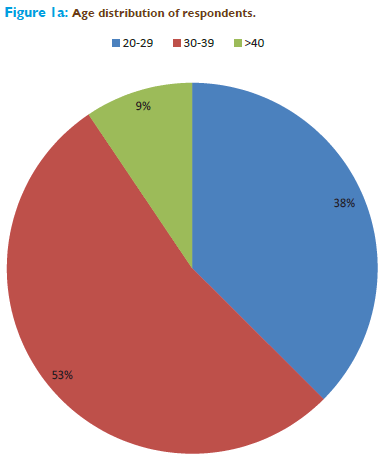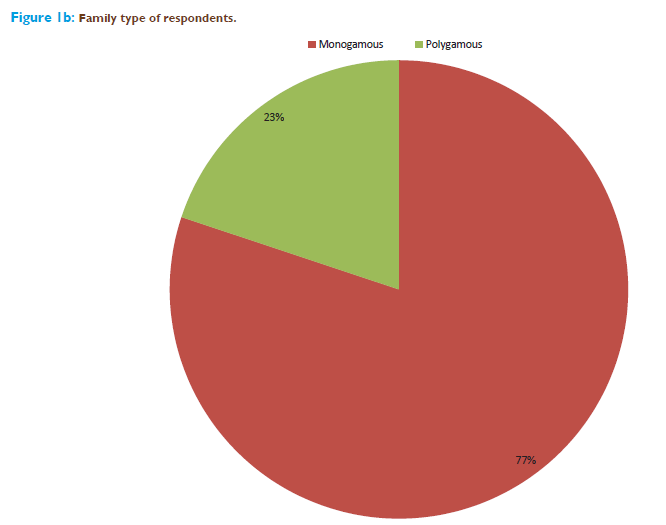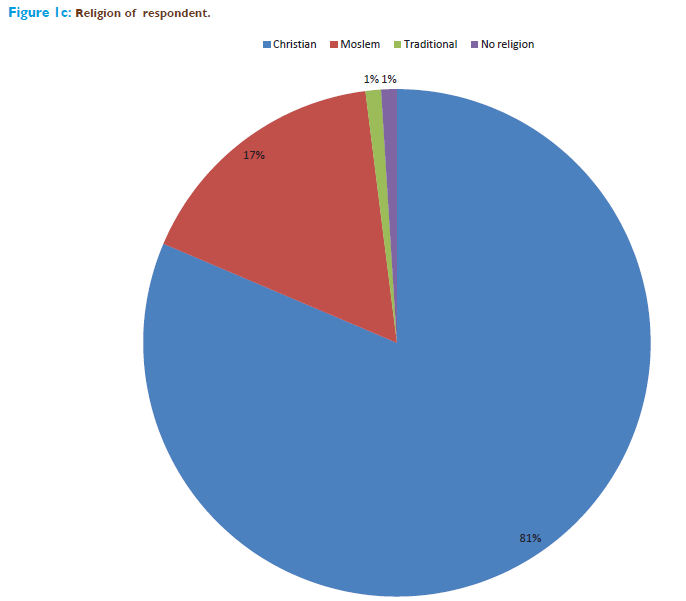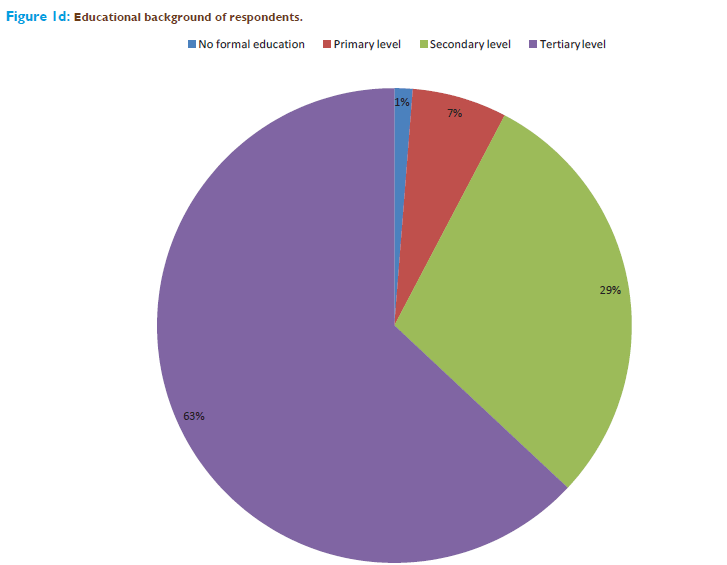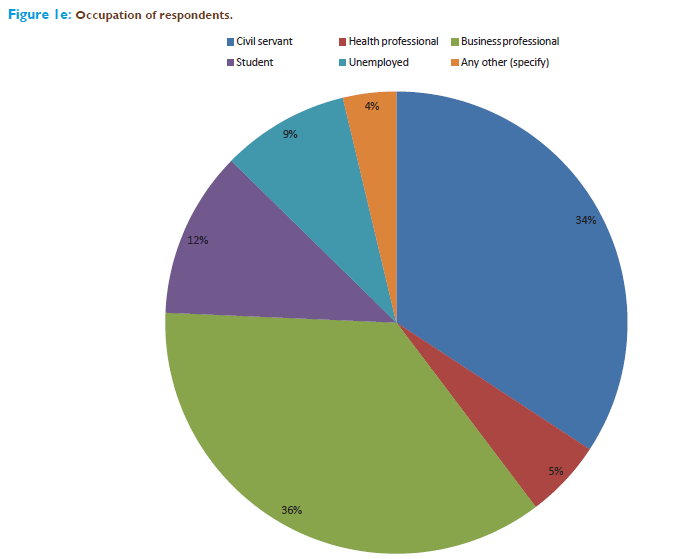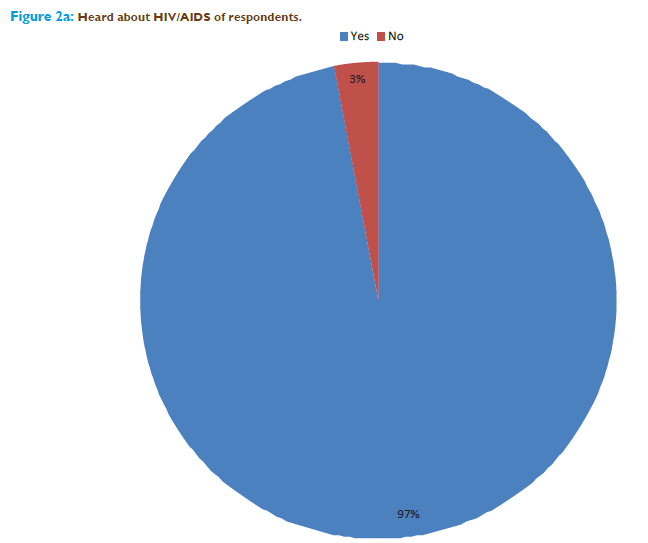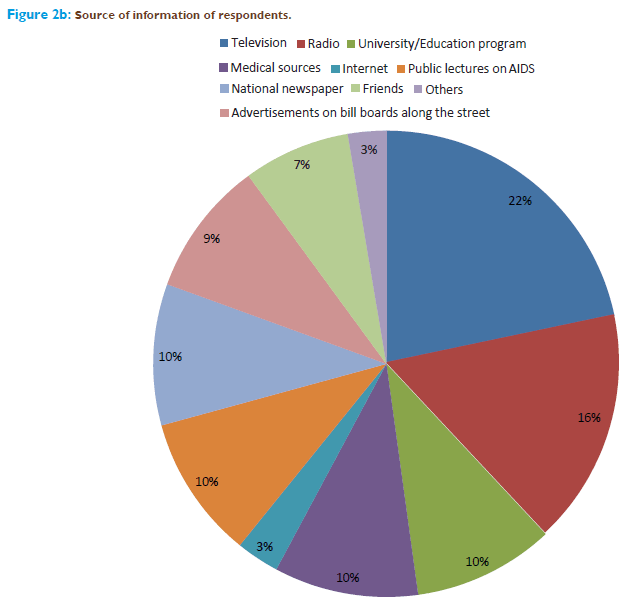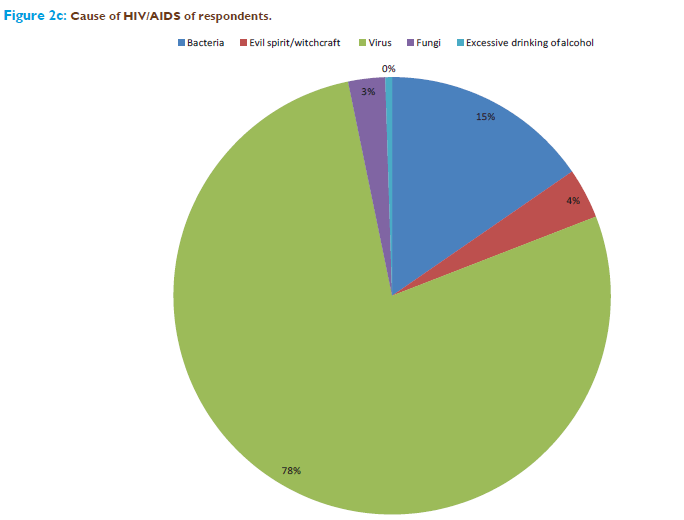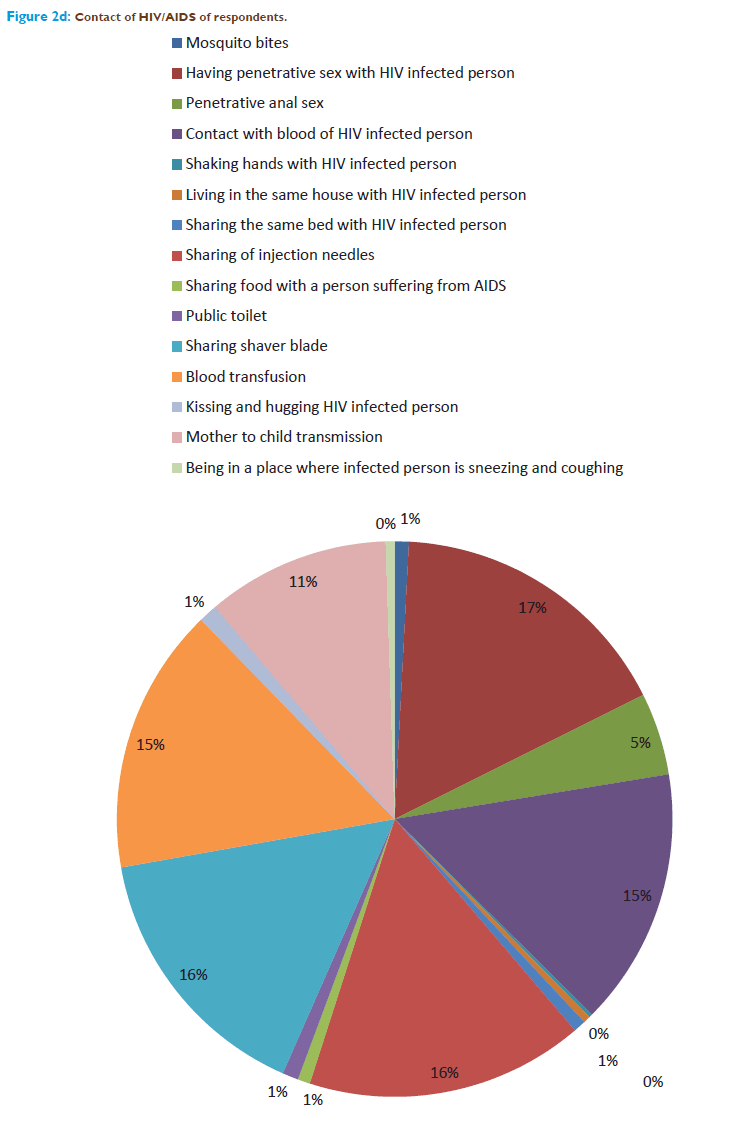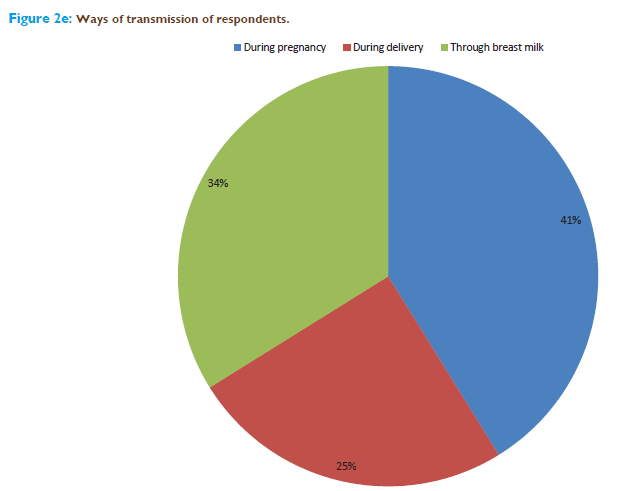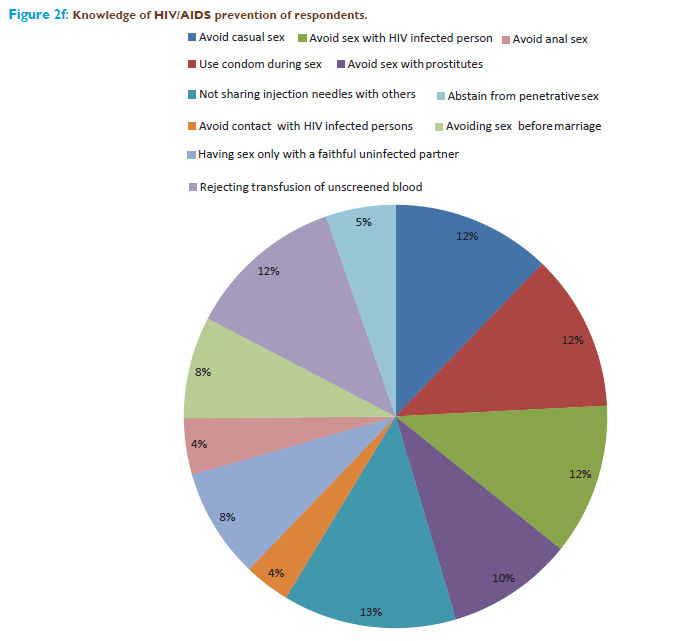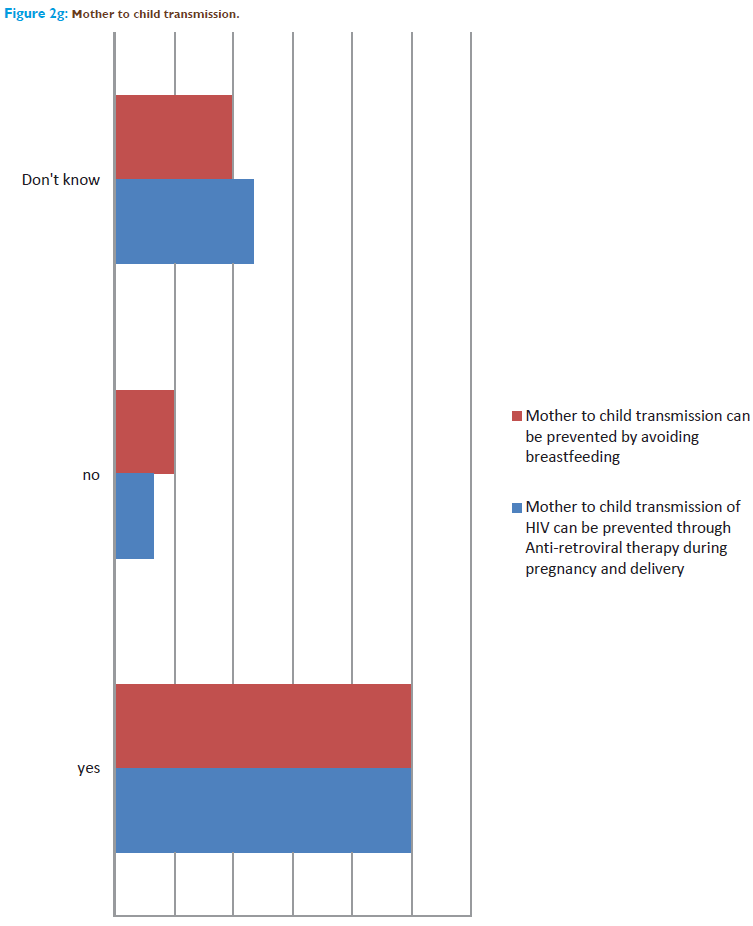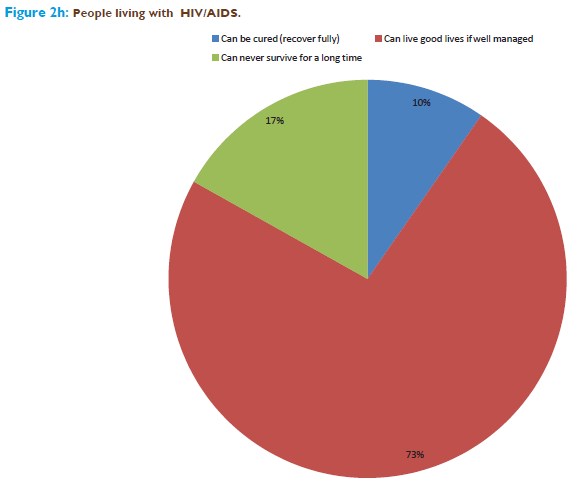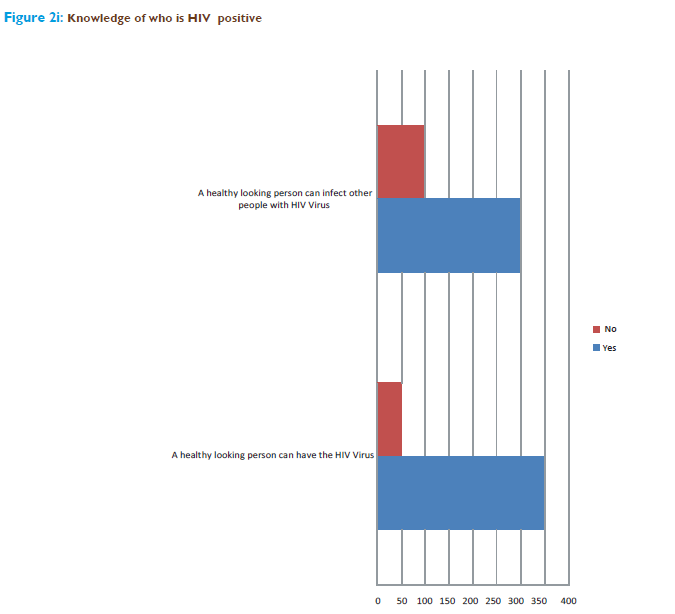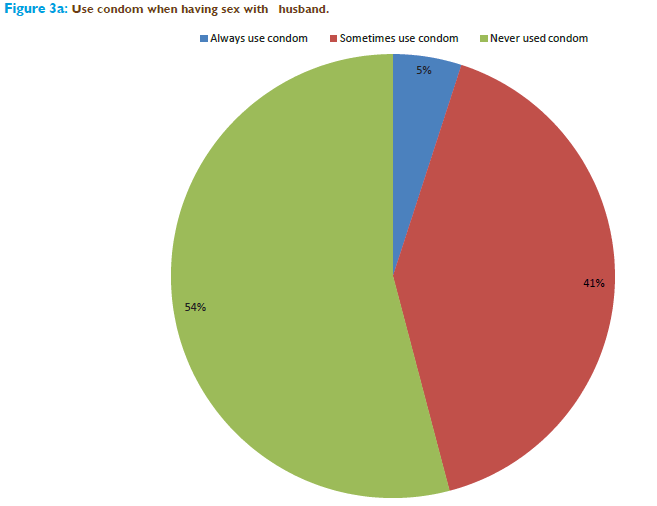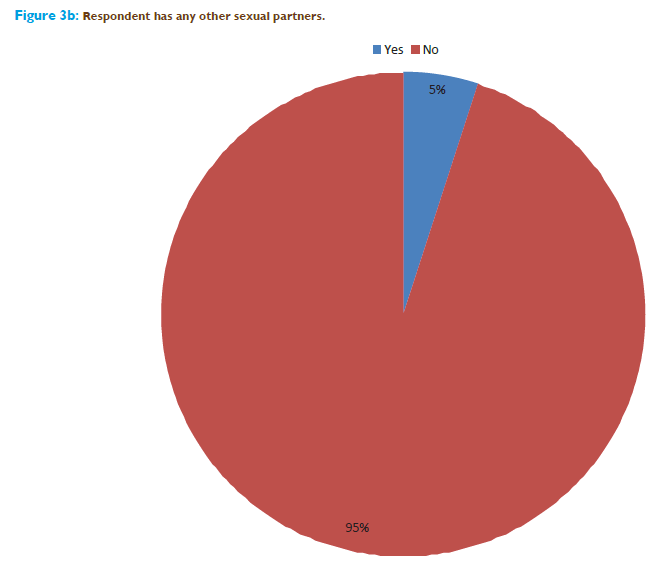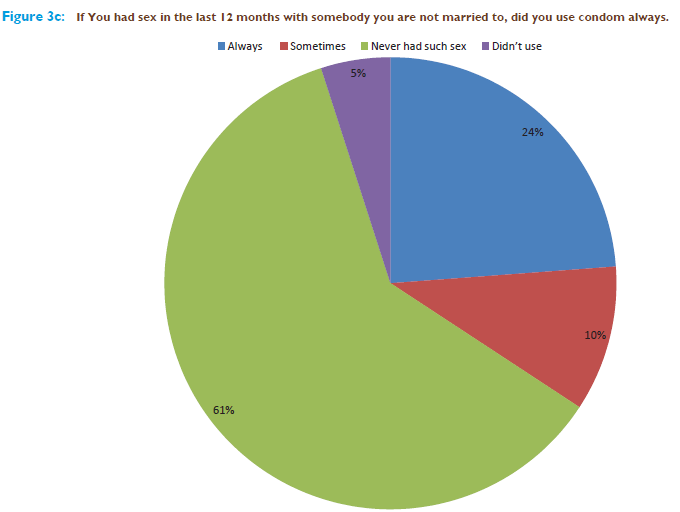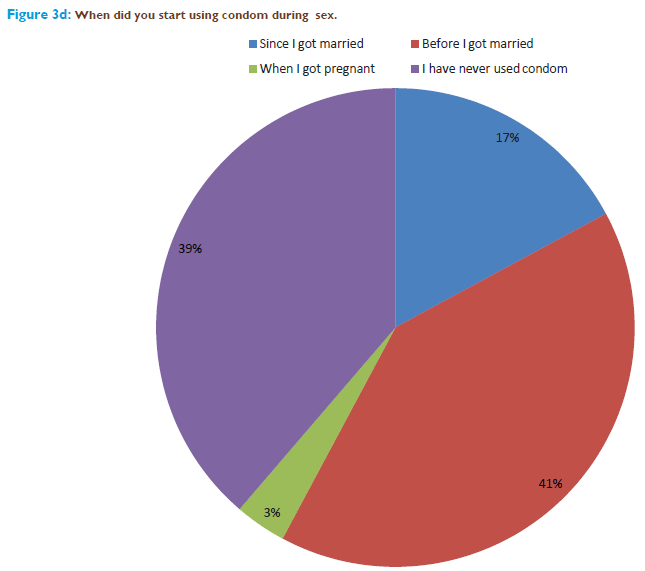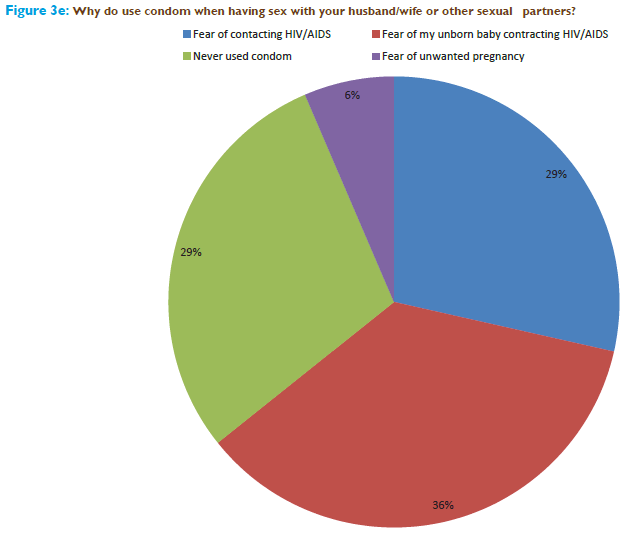HIV/AIDS Knowledge, Attitude and Risk Perception among Pregnant Women in a Teaching Hospital, Southwestern Nigeria
- *Corresponding Author:
- OJIEABU Winifred Aitalegbe
Department of Clinical Pharmacy and Biopharmacy, Faculty of Pharmacy, Sagamu, Olabisi Onabanjo University, Ago Iwoye, Ogun State, Nigeria
E-mail: natbelpharmacy@yahoo.com
Date of Received : 16-06-2011
Date of Accepted : 28-08-2011
Available Online : 15-11-2011
Abstract
Aim The rising HIV infection rates among women especially of child bearing age particularly in Sub-Saharan Africa expose children to increased HIV risk even before they are born. Without effective measures or awareness campaigns to deal with mother-to-child transmission, 390 000 out of the global 430 000 children newly infected with HIV during 2008 were from sub-Saharan Africa. This study was undertaken to assess HIV/AIDS related knowledge, attitude and risk perception among pregnant women in Tertiary hospital, Southwestern Nigeria. Method The study was carried out using a 43- item self administered questionnaire, pretestd and administered to 403 pregnant women during ante-natal clinic sessions. Results High HIV/AIDS awareness level (97%) was recorded, 77.7% had correct knowledge of the cause of the disease but knowledge on the modes of vertical transmission during pregnancy (57.5%) and prevention during breast-feeding (62.3%) was not encouraging. A lot of misconceptions about the cause of the HIV/AIDS, modes of contact, transmission, prevention and anti-retroviral therapy were recorded. Conclusion The survey revealed that a lot needed to be done to improve the knowledge, attitude, perception and behavioral changes among the populace especially in this particular group. This calls for urgent and proper response in order to stem the tide of HIV/AIDS.
Keywords
HIV/AIDS, Pregnant women, Tertiary hospital
Introduction
In sub-Saharan Africa as a whole, women account for approximately 60% of es- timated HIV infections [1-2]. Without effective measures or awareness campaigns to deal with mother-to-child transmission, 390 000 out of the global 430 000 children newly infected with HIV during 2008 were from sub-Saharan Africa1 Rates of HIV transmission from mother to child ranged from 25% to 40% in less developed countries, and from 15% to 25% in more developed countries [3]. In general women are at greatest risk than men for HIV transmission by heterosexual contact. Cultural and gender norms related to sexual expression place women and particularly older women at risk for HIV infection [4].
While globally, women constitute 48% of adults infected with HIV, in Nigeria, they constitute 57% with new infections occurring in the 15-25 years old age group [5,6] and women are particularly affected by the epidemic in Nigeria. In 2006, it was reported that a population of 2.9 million HIV persons live in Nigeria and as many as 220,000 died from HIV/AIDS in 2005 [7]. Although the reported national prevalence rates have been declining in the last 5 years, there are strong regional differences in this vast and socio-economically diverse country, Nigeria, where prevalent rates in 2005 varied from as low as 1.6% in the South West to as high as 10% in the North Central parts (2005 sentinel survey).
In an effort to reduce its high maternal and infant mortality and high rates of sexually transmitted infection, Nigeria developed a national Health policy in 2000 whose aims included among others changing behavior leading to HIV and other sexually transmitted infections among adolescents [8]. When Olusegun Obasanjo became the president of Nigeria in 1999, HIV/AIDS prevention, treatment and care became one of the government’s primary concerns. The president’s committee on AIDS and the National Action committee on AIDS (NACA) were created, and in 2001, the government set up a three year HIV/AIDS Emergency Action plan. Despite these positive intentions for tackling the epidemic, in 2006 it was estimated that just 10% of HIV-infected women and men were receiving antiret- roviral therapy and only 7% of pregnant women were receiving treatment to reduce the risk of HIV transmission from mother to child [1]. Individuals’ knowledge of HIV transmission and accurate assessment of their own risk seem to be among the key factors in adoption of safer sexual practices.[9]
Also, in many developed countries, HIV testing, antiretroviral therapy and infant feeding modifications have been used to virtually eliminate mother-to-child transmission of HIV yet Sub-Saharan Africa continues to be heavily affected due to lack of knowledge, testing services and antiretroviral therapy.[10]
This study focused on assessing the knowledge, sexual behavior and risk perception of pregnant women attending a tertiary health institution in Southwestern Nigeria.
Materials and Methods
Study population
This was a descriptive study carried out at the Olabisi Onabanjo University Teaching Hospital, Sagamu, Ogun state, a tertiary health institution established for the purpose of training medical and pharmacy students. A sample size of 403 pregnant women attending ante-natal clinics calculated through appropriate statistical method was enrolled for this study. The number was determined by a standard normal deviation set at 1.96 which corresponds to 95% confidence level and a margin of sampling error acceptable set at 5%.
Research instrument
A well structured questionnaire designed to assess these pregnant women’s HIV/ AIDS related knowledge, attitude and risk perception was used to obtain data such as sociodemographic characteristics, knowledge and sources of information about HIV/AIDS and sexual practices of respondents in the last 12 months. The self-administered questionnaire was pretested for comprehensibility, appropriateness of language and sensitivity of questions including average duration of administration. The questionnaire was administered in English Language during clinic sessions with the assistance of final year pharmacy students who were trained on questionnaire administration, technique and retrieval. We had at least one pharmacist representative of the three major languages: Ibo, Hausa and Yoruba who administered the questionnaire. This was necessitated in order to overcome these language barriers.
Ethical issues
Consent to administer the questionnaire was obtained from the appropriate au- thorities within the hospital. All pregnant women who came for ante-natal booking care in the hospital during the study period were eligible for the survey except few who refused to be administered the questionnaire. The nature of the study was explained to them and their consent obtained while maintaining maximum confidentiality of information by excluding the names of the respondents or any information that could be linked to anybody. Data collection covered a period of three and half months.
Data analysis
The data was analyzed using SPSS package version 13.0. Descriptive analysis of frequencies and percentages were generated for all the variables except where specified. The association between the dependent variables was determined.
Results
Socio demographic characteristics of respondents
The age range of the respondents was 20-40 and above years. Age range 30-39 years accounted for the highest percentage (53.1%) while those above 40 years ac- counted for 9.4%. Majority (76.7%) were of monogamous families while 23.3% be- longed to polygamous type. Majority of the respondents (81.4%) were Christians while 63% had tertiary education. They were mainly business professionals (36%) and civil servants (34.2%) and 94% live with their husbands (Figure 1a-f).
Respondent’s knowledge about HIV/AIDS
The majority (97%) of the respondents had heard about HIV/AIDS while 3% had not. Their main sources of information about HIV/AIDS included the television (79.2%) and radio (59.69%). Other sources identified were University education program (35.7%), medical sources (36.5%). Public lectures on AIDS (36.2%), National Newspapers (35.7) and advertisements on bill boards (34.2%).
The result indicated that 77.7% of the respondents knew that virus is the cause of HIV/AIDS. Other causes indicated were bacteria (15.4%), evil spirit/witch- craft (3.7%), fungi (2.7%), while excessive drinking of alcohol was 0.5%.
Knowledge of ways to contact HIV/AIDS indicated by the respondents were, having penetrative sex with infected person (80.9%,) sharing of injection needles (77.9%), sharing shaver blade (75.2%), blood transfusion (74.7%) contact with blood of HIV infected person (72.2%), mother to child transmission (51.4%) while kissing and hugging HIV infected person, public toilet and mosquito bites were 5.2%, 4.5% and 4.0% respectively. Knowledge of HIV/AIDS among the respondents was above average in some areas but particularly very poor on mother to child transmission. Percentage that identified transmission during pregnancy, delivery and through breast milk accounted for 57.5%, 34.8% and 47.3% respectively. On HIV/AIDS prevention, the respondents’ knowledge was average as avoid casual sex, not sharing injection needles with others and rejecting unscreened blood transfusion accounted for 64.8%, 70.7% and 63.8% respectively. The percentage who knew mother to child transmission can be prevented through anti-retroviral therapy was 62.8% while 8.2% and 29% said no and don’t know respectively. Also 62.3% knew mother to child transmission can be prevented by avoiding breast feeding while 13.6% and 24.1% indicated no and don’t know respectively.
Above seventy percent (70.7%) of the respondents believed that one best way to prevent HIV/AIDS transmission is not to share injection needles with others. Other preventive methods indicated were avoid casual sex ( 64.8%), use condom during sex and reject transfusion of unscreened blood both recorded 63.8%, avoid sex with HIV infected person (61.5%) avoid sex with prostitutes ( 51.1%) while those who indicated that there is no way a person can avoid HIV infection had 2.2%.
About 85% of the respondents believed a healthy looking person can have the HIV virus while 75.4% believed the same can infect other people with HIV virus. Those that indicated otherwise were 14.9% and 24.6% respectively.
On knowledge of respondents on mother to child prevention through antiretroviral therapy and avoiding breast feeding, 62.8% and 62.3% indicated ‘yes ’respectively while 8.2% and 13.6% indicated ‘no’ respectively. Those that did not know about these modes of prevention were 29.0% and 24.1% for ARV therapy and avoiding breast feeding respectively. Above seventy percent (70.7%) of the respondents believed that one best way to prevent HIV/AIDS transmission is not to share injection needles with others. Other preventive methods indicated were, avoid casual sex ( 64.8%), use condom during sex and reject transfusion of unscreened blood both recorded (63.8%), avoid sex with HIV infected person (61.5%) avoid sex with prostitutes ( 51.1%) while those who indicated that there is no way a person can avoid HIV infection 2.2%. As per the ways a mother can transmit HIV/AIDS to the child, 57.5%, respondents indicated during pregnancy, 47.3% indicated through breast milk while 34.8% indicated during delivery. (Figure 2a-i).
Sexual practices of respondents
Although majority (95%) of the respondents did not have any other sexual partners apart their husbands, 40.9% sometimes used condom when having sex with their husbands while 5% always used condom when doing the same thing. Very few (23.8%) said they always used condom when they had sex with someone they were not married to in the last 12 months. While 10.4% sometimes used, 5% didn’t use and 60.8% never had such sex. Majority (40.7%) of the respondents started using condom before they got married, 38.7% had never used condom while a small percentage (3.5%) started the practice when they got married and only 5% of the respondents had other sexual partners apart from their husbands. The reasons given for using condom included being afraid that their unborn babies could contact HIV (35.7%), being afraid of contacting HIV themselves (28.5%) and as a preventive of unwanted pregnancy (6.5%), (Figure 3a-e).
Sociodemographic Characteristics of Respondents
Marital Status of Respondents

Knowledge of Respondents About Hiv/Aids
Knowledge of Respondents About Hiv/Aids
Discussion
Knowledge of HIV/AIDS
Knowledge of HIV/AIDS was appreciably high in some areas but very poor in other areas. Awareness of HIV/AIDS among the respondents was high as almost all have heard of the scourge. A high level of awareness has also been reported by other researchers in other parts of Nigeria [11,12]. Although ignorance is no longer an issue, it remains unclear how perception of risks influences people’s sexual be- havior. Literature suggests that people seem to make judgments about risks based on a number of factors and not of their knowledge of AIDS risks [13]. Knowledge of sexual contact or transmission was higher when compared with knowledge of other modes of contact. Barely a little above half of the respondents knew that HIV can be transmitted to the unborn child during pregnancy while less than half knew that the virus can be transmitted during delivery and breastfeeding. A low level of knowledge of routes of mother to child transmission has also been reported in similar work in the country, [14] and in other countries like Uganda and Tanzania [15]. The knowledge of mother to child prevention was not encouraging as only slightly average numbers knew that anti-retroviral therapy could reduce the incidence of HIV transmission during pregnancy, delivery and by avoiding breastfeeding as one third of the respondents’ believed otherwise. The issue of avoiding breastfeeding of babies is a contentious one in our society and may not really be practicable because a substitute may not be acceptable, feasible, afford- able, safe and sustainable from cultural, social and economic view point [16]. The main risk factor in mother to child transmission is lack of awareness of HIV sta- tus. Because approximately 25% of all the people infected with HIV do not know their status [17], as many infected women may not know they are infected. This is why Center for disease control (CDC) recommended routine HIV testing for all pregnant women [18].
On knowledge of who is HIV positive, a higher percentage knew that a healthy- looking person can have the AIDS virus compared to those who believed that the same HIV positive person can infect other people. The respondents also have above average knowledge on HIV/AIDS treatment as many of them knew that HIV/AIDS persons can live good lives if well managed.
Misconceptions
There were a lot of misconceptions about the cause of HIV/AIDS, since as high as 15% still believed AIDS is caused by bacteria and other smaller percentages of re- spondents believed evil spirit, fungi and excessive drinking of alcohol can cause the disease. Misconception on ways of HIV/AIDS contact was also high and varied as some believed that mosquito bites, shaking hands with HIV infected person, living in the same house, sharing the same bed or food with HIV positive person, public toilet, kissing, hugging and being in a place where an infected person is coughing and sneezing were all ways of contacting HIV/AIDS. This problem of misconception was also seen by previous investigator [19].
There was also a great misconception on ways a mother could infect the child as respondents’ knowledge about them was very low. A lot of misconceptions were also noticed on HIV/AIDS prevention as some respondents indicated there was no way a person can avoid contacting HIV/AIDS. Respondents believing there is cure of HIV/AIDS or that HIV/AIDS infected persons can never survive for a long time was another form of serious misconception. Misinformation concerning a “cure” for AIDS is one of the risk factors for contracting the disease.
There were also misconceptions on Anti-retroviral therapy during pregnancy, delivery and breastfeeding as some of the respondents indicated that anti-retroviral drugs cannot prevent transmission from mother to child. HIV prevention pro- grams are less expensive than HIV treatment and care and should be a critical component of any HIV intervention program. Lack of accurate information about sexual health has meant there are myths and misconceptions about sex and HIV, contributing to increasing transmission rates as well as stigma and discrimination towards people living with HIV/AIDS.
Sources of information
The findings that the television, radio, medical sources, public lecture on AIDS, national news papers and advertisement on bill boards were more effective than other sources of information are of importance in planning health education programs for the women. They also indicate that women are interested in listening and reading about diseases that affect them and their families from every source. In addition to the fact that mass media does not allow in-depth knowledge of HIV/AIDS, [20] a study by Wolffers [21] has shown that most media have done little to change existing cultural values and prejudice about the sexuality and the situation of people who are living with HIV. They are good at educating people that HIV and AIDS exist but mainly in a frightening way because they have seldom given enough in-depth infor- mation to contextualize this information. The power of information, education and communication in prevention and control of HIV/AIDS had been advocated [22].
Sexual practices
The respondents mostly never used condoms when having sex with their husbands and majority of them had no other sexual partners apart from their husbands. Many of them used condoms before they got married to protect themselves from contacting HIV/AIDS and against unwanted pregnancy. All these precautions indicated sexual discipline among these pregnant women.
Marriage provides checks and balances on individual’s sexual behavior. Soci- etal norms in Africa expect faithfulness in marriage particularly for women, with severe consequences in case of infidelity. In our society, condoms are associated with unfaithfulness and therefore not acceptable in most stable relationships although condoms are adjudged to be the most effective barrier method because they can be used for disease prevention as well as protection against pregnancy [23].
The relationship between perception of risk and sexual behaviour is complex and poorly understood. Studies conducted in different cultures have associated HIV risk perception with a wide range of variables: number of sexual partners, knowledge of sexual partners’ past sexual behaviour, fear of AIDS, shame associ- ated with having AIDS, community perception of AIDS risk, knowing someone with AIDS, discussing AIDS at home, closeness of parent-child relationships and religious affiliation. [24]
HIV status of Respondents
A situation whereby 7% of the respondents’ was HIV positive is disheartening. Al- though the majority of the respondents think it is necessary to go for HIV test and are willing to know their HIV status, they had not actually gone for the test. In view of the recognized benefits of prior knowledge of a positive HIV status to a pregnant woman, her unborn baby, the health staff and the society at large, routine testing for HIV has been recommended and adopted in most hospitals in the developed and developing countries [25]. Those who didn’t think it necessary to go for HIV test or not willing to know their status acted out of ignorance of the benefits of its prior knowledge. This makes education and counseling about HIV/AIDS imperative as stated earlier [22]. A minor percentage said they were not interested in knowing their HIV status for fear of what the result would be or were afraid of what people might say if it turned out to be positive. This may relate to stigma and discrimination directed at people living with HIV/AIDS. AIDS stigma and discrimination had been seen all over the world, manifesting differently between countries, communi- ties, religious groups and individuals. Stigma directed at PLWHA not only makes it more difficult for people trying to come to terms with and manage their illness on a personal level, but it also interferes with attempts to fight the AIDS epidemics as a whole because it makes individuals reluctant to access HIV testing, treatment and care. Stigma helps make AIDS the silent killer, because people fear the social dis- grace of speaking about it or taking easily available precautions and is the chief rea- son why the AIDS epidemic continues to devastate societies around the world [26].
Conclusion
The study revealed a pregnant women-population with slightly above average knowledge of HIV/AIDS, positive attitude to HIV positive persons and disci- plined sexual behavior. It supports the documented facts that the prevalence of HIV is high in the reproductive age group during which sexual activity is high as well as agreeing with earlier findings that young adults especially females are at the centre of the epidemic. Taking everything into account, the media should apply new methods of HIV education to improve public knowledge about HIV/AIDS. The issue of stigmatization on a very strong term needs urgent attention in order to stop further spread of HIV/AIDS. Successful prevention of HIV/AIDS among this population needs ongoing educational programs on the modes of transmission, and prevention of the virus as well as management of those already infected with the virus.
Potential Conflicts
The authors declare that they have no competing interests.
References
- UNAIDS.Global Summary of the AIDS Epidemic. 2008. 10. Available at: http:// www.unaids.org/en/media/unaids/contentassets/dataimport/pub/report/2003/ jc1700_epi_update_2009_en.pdf).
- Garcia-Calleja JM, Gouws E, Ghys PD (2006). National population based HIV prevalence surveys in sub-Saharan Africa: results and implications for HIV and AIDS estimates. Sexually Transmitted Infections, 82 (Supp. 3):iii64?iii70.
- Isabelle de V, Ehounou E. Reducing the risk of mother-child-transmission of HIV during Pregnancy and Delivery, in HIV/AIDS prevention and care in Resource-Constrained Settings: A handbook for the design and management of programs, ed.Peter R.Lamptey and Helene D.Gayle (Arlington, VA: Family Health International AIDS Institute); 2001: 427-50.
- Murphy, E. M. Being born female is dangerous for your health. American Psy- chologist. 2003; 59 (3): 200-210.
- Joint United Nations Program on HIV/AIDS (UNAIDS). Report on the global AIDS epidemic, 2006. www.unaids.org/en/HIV_2006GlobalReport/default. asp. Accessed 06/11/10.
- Federal Ministry of Health of Nigeria (FMOH)/ National HIV/AIDS and STI Control Program (HAST). The 2005 National Seroprevalence Sentinel Survey. Abuja: FMOH/HAST 2006
- UNAIDS/WHO. Report on the global AIDS epidemic. Joint United Nations Programme on HIV/AIDS(UNAIDS).http://www.unaids.org/en/ HIV_ data/2006GlobalReport/default.asp. Accessed 24/9/2010.
- Slap GB, Lot L, Huang B, Daniyam CA,Zink TM,Succop PA. Sexual Behavior of adolescents in Nigeria: Cross sectional Survey of Secondary School Stu- dents.BMJ. 2003; 326:15-18.
- Joint United Nations Programme on AIDS (UNAIDS) HIV Prevention Needs and Successes: A Tale of Three Countries. An Update on HIV Prevention Suc- cess in Senegal, Thailand and Uganda, Geneva: 2001.
- US Aids for International Development (USAID).Nigeria a Country profile (HIV/AIDS); 2003 www.usaid.gov/acations/sub_sahara africa/countries/ni- geria. Accessed on 6/11/10
- Igwegbe AO, Ilika AL. Knowledge and perception of HIV/AIDS and mother to child transmission among antenatal mothers at Nnamdi Azikwe University Teaching Hospital, Nnewi. Nig J Clin Pract. 2005; 8(2): 97-101.
- Adeneye AK, Mafe MA, Adeneye AA. Knowledge and perception of HIV/AIDS among pregnant women attending antenatal clinic in Ogun State, Nigeria. Afr J. AIDS Res. 2006; 5(3): 273-279.
- Nzioka, C. Perspectives of adolescent boys on the risks of unwanted preg- nancy and sexually transmitted infections. Kenya.Reprd. Hlth Matters. 2001; 9: 108-117.
- Ezegwui HU, Ikeme AC, Onwasigwe CN. Attitude of antenatal patients in Enugu towards HIV screening. Trop J Obstet Gynecol. 2005; 22(2):156-158.
- Harms G, Mayer A, Karcher H. Prevention of mother to child transmission of HIV in Kenya, Tanzania, Uganda. Report of Government of Tanzania PMTCT Project. International Coordination Office. Berlin, Germany. 2003; 1-26.
- Federal Ministry of Health of Nigeria (FMOH).National guideline on preven- tion of mother to child transmission of HIV in Nigeria, Abuja. 2005.
- Marks G, Crepaz N, Janssen Rs. Estimating Sexual transmission of HIV from persons aware and unaware that they are infected with the virus in the USA. AIDS. 2006; 20(10): 1447-1450.
- Revised Recommendations for HIV testing of adults, adolescents and preg- nant women in the health care settings.MMWR. 2006; 55 (RR-14): 1-17.
- Ojieabu WA, Erah PO, Okafor NA. HIV/AIDS knowledge and sexual behav- iour. Int J Health Res. March 2008; 1(1): 35.
- Oyo-Ita AE, Kpeme BM, Etokidem AJ, Offor JB, Okokon EO, Etuk SJ.. Knowledge of HIV/AIDS among secondary school adolescents in Calabar ? Nigeria. An Afr Med. 2005; 4(1): 2-6.
- Wolffers I. Culture, media and HIV/AIDS in Asia Lancet. 1997; 349: 52-54.
- Femi Oyewo MN. Information, Education and Comunication in the Prevention and Control of HIV/AIDS. West Afr. J.Pharm. 2003; (17) 1:25- 32.
- Family Health International. Distribution and use of male condoms in Kenya. 1998. Unpublished.
- Macintyre K et al, Understanding perceptions of HIV risk among adolescents in KwaZulu-Natal, AIDS and Behaviour. 2004; 8(3):237?250.
- Carusi D, LA, Posner SF. Human Immunodeficiency Virus test refusal in Preg- nancy: a challenge to voluntary testing.Obstet Gynaecol. 1998; 540-545.
- Joy Online. UN boss writes on HIV/AIDS and The stigma factor 2008.


